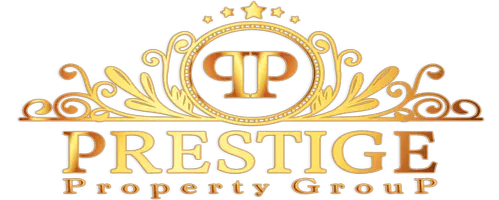The Latest Housing Trend Blends Luxury, Wellness, and Future-Proof Design in the Most Important Room in the House
Gone are the days of ordinary bathrooms with confined showers.
Recently, wet rooms—fully waterproofed bathrooms with open, barrier-free showers—have become one of the most desirable home upgrades.
Their wellness appeal paired with aging-in-place benefits and potentially high resale value make wet rooms a strong investment for both luxury and midrange homes.
From single professionals who prioritize self-care, young families in need of convenience, and empty nesters who desire a safe yet luxurious design, these modern bathrooms cater to a range of homeowners.
What's driving the rise of wet rooms?
A wet room is a fully waterproofed bathroom with a shower—one that’s not constrained behind a cubicle or sealed in with a door. Unlike in a traditional bathroom setup, the floor in a wet room is sloped toward a central drain, removing all barriers.
“The entire space including the floors, walls, and ceiling is designed to handle water, creating a seamless, open, and often spa-like environment,” says Kati Curtis, principal at Kati Curtis Design in New York City.
It’s no surprise that as of late, Curtis and other designers have been a part of many wet room projects. These modern bathrooms offer the ideal blend of luxury, wellness, and convenience.
A wet room, which can make one of the most used rooms in your home seem modern and luxurious, is often a great option if you have a smaller bathroom and want to maximize its appeal. Also, if you value an open, uncluttered lifestyle or are living with limited mobility and want to reduce the risk of falls or injuries, it can be a solid choice.
Why wet rooms appeal to buyers and add value
Buyers are all about wet rooms because they make bathrooms feel larger and more luxurious while still being practical.
According to Curtis, wet rooms are evocative of a high-end upgrade, and draw in those who want both indulgence and longevity in their homes.
“We recently completed a wet room for one of our clients who prefer to shower and bathe their toddlers at the same time. It provided them with the perfect space to do both,” says Curtis.
Luxury buyers, wellness-focused millennials, and downsizers who appreciate the accessibility of curbless entries and open layouts can’t get enough of this trend. It also appeals to parents of young kids as they allow for baths, showers, and cleanups all in one space.
Not surprisingly given the upgrades needed, wet rooms don't come cheap. “The average cost of a bathroom with two sinks plus a separate tub and shower usually starts at about $25,000. Since a wet room requires the entire space to be waterproofed, it will likely run you 25% to 30% more,” explains Pamela Haston, interior designer at Haston Interiors in Marietta, GA.
Additionally, the fixtures you choose can add $10,000 to $25,000 or even more to the cost. Curtis explains that the wet rooms she designs for her luxury clients often go well into the six figures. She also adds that tariffs on imported stone and certain metal fixtures can increase the cost, so domestic options for wet rooms might be a smarter choice in the current environment.
“Fortunately, a wet room may increase the value of your home enough to cover its hefty price tag. The key is to find buyers that appreciate it,” says Haston.
In competitive markets like California, Florida, and the Northeast, wet rooms are more likely to attract premiums as many buyers have no problem splurging on a spa-like retreat in their homes.
What to know before converting your bathroom
Before you transform a traditional bathroom into a wet room, understand that this is not a DIY-friendly project.
“Proper ventilation, waterproofing, sloping, and drainage are critical, so a professional contractor who has successfully completed wet rooms in the past is essential,” says Curtis.
Also, since you won’t have a traditional shower enclosure to hide your toiletries, be sure to explore different storage options. Wall-mounted shelves and cabinets, built-in niches, and under-sink or vanity storage can all come in handy.
Don’t forget to future-proof the design so that it allows for safety as you age in place. “Add a built-in bench and integrate grab bars that look intentional. Of course, keep the entry curbless to ensure the bathroom works for every stage of life,” explains Curtis.
And, if you plan to sell in the future, Justin Chau, real estate agent in San Gabriel, CA, recommends you consider the state of the rest of your home.
“You could have an amazing wet room but a buyer probably won’t pay a premium price for it if most of your home is outdated,” explains Chau.
Categories
Recent Posts










GET MORE INFORMATION

